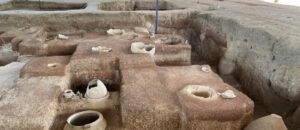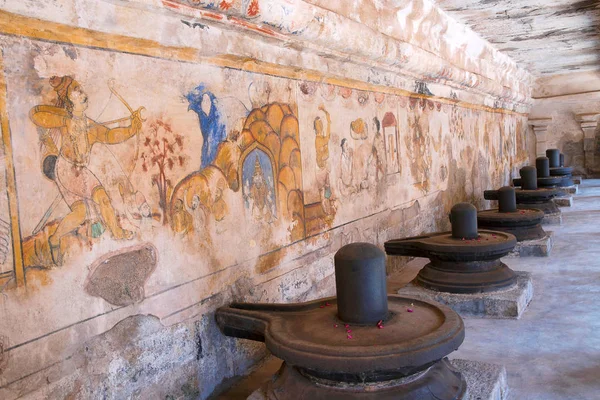From the Chronicles
Masters of Governance, Maritime Power & Timeless Art

Did you know the Cholas, one of India’s mightiest dynasties, had two fascinating timelines?
The lassical Cholas (3rd century BCE) were early trailblazers Fast forward to the Imperial Cholas (9th–13th centuries CE), and they became global influencers under kings like Raja Raja Chola I and Rajendra Chola I, conquering lands from Sri Lanka to Southeast Asia.
Rajaraja I (985–1014)
Rajendra I (1014–1044)
Kulothunga I (1070–1122)
Rajaraja II (1150–1173)
Kulothunga III (1178–1218)
Major emperor of the Imperial Cholas
History Speaks
The Imperial Cholas were a powerful dynasty that ruled parts of southern India from the 9th century to the 13th century CE.
During their reign, they achieved great prosperity and established a vast empire, leaving behind a rich legacy of art, architecture, and literature.
Their dominion extended across South India, Sri Lanka, and Southeast Asia, reflecting their military might and maritime prowess.
During their reign, they achieved great prosperity and established a vast empire, leaving behind a rich legacy of art, architecture, and literature.
Their dominion extended across South India, Sri Lanka, and Southeast Asia, reflecting their military might and maritime prowess.
Key Achievements
Military Expansion: The Cholas conducted successful campaigns in India and Southeast Asia, subjugating the Pandyas, Cheras, Sri Lanka, and even the Srivijaya Empire (modern Indonesia and Malaysia).
Administrative Excellence: They developed an efficient governance system, introducing a structured bureaucracy and village self-governance (Sabhas).
Naval Supremacy: They built a formidable navy that controlled key maritime trade routes in the Indian Ocean. Cultural Contributions: The Cholas were great patrons of Tamil literature, temple architecture and bronze sculpture.
Administrative Excellence: They developed an efficient governance system, introducing a structured bureaucracy and village self-governance (Sabhas).
Naval Supremacy: They built a formidable navy that controlled key maritime trade routes in the Indian Ocean. Cultural Contributions: The Cholas were great patrons of Tamil literature, temple architecture and bronze sculpture.
Rajendra I
Rajendra Chola I
The Great Conqueror and the Creator of Gaṅgaikoṇḍa Cholapuram
Rajendra Chola I worshipping the Brihadisvara.
The temple’s story begins with Rajendra Chola I (r. 1012–1044 CE), the son of the famous Rajaraja Chola I.
While his father focused on consolidating power in the south, Rajendra embarked on ambitious military campaigns, expanding the Chola Empire northward towards the Gaṅgā River.
In 1025 CE, Rajendra led a historic campaign against the Pala dynasty of Bengal, marching deep into northern India.
His victories are celebrated in epic Tamil poems like the Kaliṅgattuparani, which highlight his military prowess.
While his father focused on consolidating power in the south, Rajendra embarked on ambitious military campaigns, expanding the Chola Empire northward towards the Gaṅgā River.
In 1025 CE, Rajendra led a historic campaign against the Pala dynasty of Bengal, marching deep into northern India.
His victories are celebrated in epic Tamil poems like the Kaliṅgattuparani, which highlight his military prowess.
Inscriptions on the temple walls

To mark his triumph, Rajendra established Gaṅgaikoṇḍa Cholapuram as his new imperial capital.
Named to honor his achievement of bringing the sacred Gaṅgā waters to the heart of the Chola Empire, the city symbolized his power and devotion.
Legend has it that as a mark of this triumph, Rajendra Chola had the holy waters ceremonially poured into the temple’s tank, reinforcing the spiritual and political significance of his rule.
The Bṛhadīśvara Temple at Gaṅgaikoṇḍa Cholapuram, inspired by the one built by his father at Thanjavur, remains an architectural masterpiece.
Named to honor his achievement of bringing the sacred Gaṅgā waters to the heart of the Chola Empire, the city symbolized his power and devotion.
Legend has it that as a mark of this triumph, Rajendra Chola had the holy waters ceremonially poured into the temple’s tank, reinforcing the spiritual and political significance of his rule.
The Bṛhadīśvara Temple at Gaṅgaikoṇḍa Cholapuram, inspired by the one built by his father at Thanjavur, remains an architectural masterpiece.
 The Bṛhadīśvara Temple in Gaṅgaikoṇḍa
Cōḷāpuram, along with the Bṛhadīśvara
Temple in Taṉjāvūr and the Airāvatesvara
Temple in Darasūram, forms the UNESCO-
listed Great Living Temples of the Chōḷas?
The Bṛhadīśvara Temple in Gaṅgaikoṇḍa
Cōḷāpuram, along with the Bṛhadīśvara
Temple in Taṉjāvūr and the Airāvatesvara
Temple in Darasūram, forms the UNESCO-
listed Great Living Temples of the Chōḷas?
Rajendra launched a naval invasion against the Srivijaya Empire, asserting Chola dominance over maritime trade in the Bay of Bengal and the Malacca Strait.
Rajendra Chola’s reign marked the zenith of the Chola Empire, with unprecedented military, naval, and architectural achievements.
His establishment of Gaṅgaikoṇḍa Cholapuram and its magnificent temple ensured that his legacy endured as one of India’s greatest rulers.
Rajendra Chola’s reign marked the zenith of the Chola Empire, with unprecedented military, naval, and architectural achievements.
His establishment of Gaṅgaikoṇḍa Cholapuram and its magnificent temple ensured that his legacy endured as one of India’s greatest rulers.

Charter issued by Rajendra I that declared the collection of revenue to build a Buddhist Vihara in Srivjaya.

P.V. Jagadīśa Ayyar’s 1920 work, “South Indian Shrines,” is a pioneering study of South Indian temple architecture, with a special focus on the Bṛhadīśvara Temple at Gaṅgaikoṇḍa Chōḷapuram.
Written during a period of growing archaeological interest in India, it offers one of the earliest detailed analyses of the temple’s structure, sculptures, inscriptions, and historical significance. This foundational text remains essential for anyone seeking to understand the architectural and cultural legacy of South Indian temples.
Written during a period of growing archaeological interest in India, it offers one of the earliest detailed analyses of the temple’s structure, sculptures, inscriptions, and historical significance. This foundational text remains essential for anyone seeking to understand the architectural and cultural legacy of South Indian temples.
Know
the Historian
the Historian
